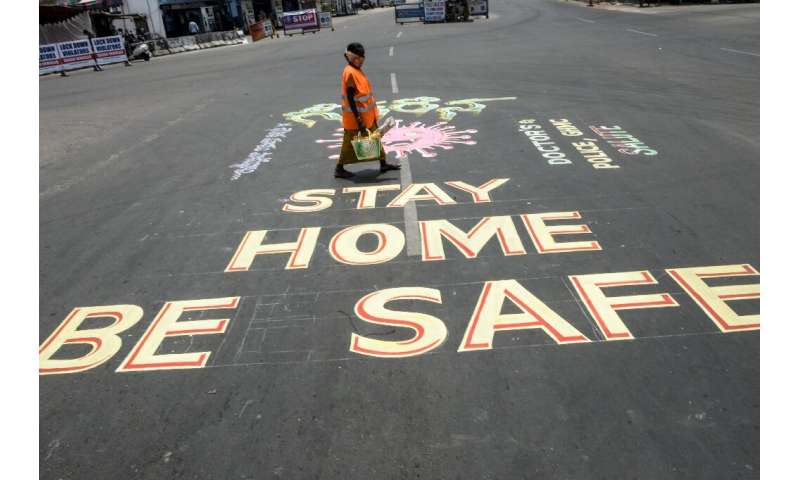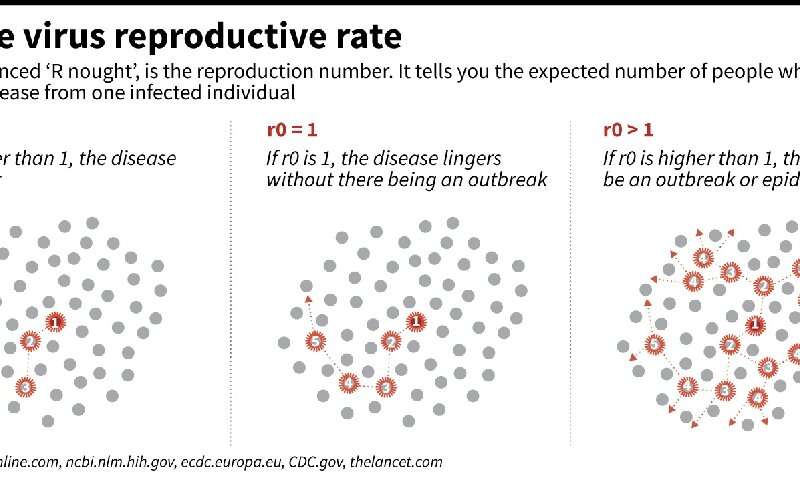
As several countries prepare to ease sweeping restrictions put in place to slow the coronavirus pandemic, experts say the openings should be enacted with extreme caution to avoid sparking a fresh wave of infection—and another painful lockdown.
Many governments, faced with exponential growth of cases of COVID-19, have ordered people to stay in their homes as they try to reduce hospital admissions and prevent intensive care units from becoming overwhelmed.
But the measures have taken a painful toll, both on economies and society itself.
“When the decision (to lock down) was taken, it was our only weapon with any hope of beginning to control the epidemic,” French epidemiologist Dominique Costagliola told AFP.
But she said the measures in France, which are expected to begin lifting next month, were taken in an “emergency” and were “not bearable in the long term, either for the people or for the country”.
Antoine Flahault, director of the Institute of Global Health at the University of Geneva said lockdown was “a Chinese invention”.
“The effectiveness of the Chinese version applied with rigor and force in Wuhan meant the least prepared countries—most Western countries—had no choice but to apply an adapted version when they found themselves facing the pandemic wave,” he said.
In Britain, where restrictions are due to last at least several more weeks, the population is broadly supportive of the lockdown, according to Linda Bauld, a professor of public health at the University of Edinburgh’s Usher Institute.
“Compliance is generally good and concern about the virus is at the forefront of people’s minds,” she said.

“But this won’t last. The social, economic and health effects of lockdown are accumulating. There will come a tipping point when the cost of the current restrictions outweighs the benefits.”
Most experts agree that the lockdowns have saved thousands of lives.
But they have given rise to a punishing worldwide economic slowdown.
The International Monetary Fund’s chief economist Gita Gopinath has dubbed the crisis the “Great Lockdown” and said it is expected to be the “worst recession since the Great Depression”.
In a blog this week, she said the loss to global output over 2020 and 2021 could be around $9 trillion, greater than the economies of Japan and Germany combined.
Specialists also fear growing risks to society: increases in inequality, domestic violence, mental health problems, alcohol consumption and the neglect of serious non-coronavirus health problems.
Balancing act
As the epidemic slows in some countries, governments are looking at ways to ease the economy back onto its feet, with measures such as the reopening of schools and shops and the loosening of confinement rules.
In Europe, Germany, France, Belgium, Switzerland, Denmark, Italy and Spain among others, are on track to ease or consider easing restrictions by mid-May.

In the United States, which has not yet passed the peak of its epidemic, Donald Trump has already said it was time to “restart America”.
Whatever the country, the exit route for lockdown measures will look more like a tightrope than a highway.
The balance will depend on a simple number—the reproductive rate of the virus, or the number of people each infected person will spread the virus to.
Before the lockdown measures were put in place, this rate was around 3.5, according to Jean-Francois Delfraissy who advises the French authorities on the virus response.
France and Germany have seen this rate drop below 1.0 thanks to weeks of containment, meaning the epidemic is under control.
This week German Chancellor Angela Merkel explained that the decision to inch the country out of lockdown was a result of data showing each COVID-19 sufferer was, on average, infecting fewer than one other person.
But she warned that even if the rate just went up to 1.1, the country’s health system would be overwhelmed by October. If the rate was 1.2 that date would be brought forward to July, and at 1.3 it would be June.
“You can see how little margin for error we have” when tweaking the step-by-step lockdown exit, Merkel said, adding that “caution should be the watchword, not over-confidence”.
French epidemiologist Laurent Toubiana, who was opposed to the country’s lockdown, told AFP that “the exit automatically brings us back to the starting point: the situation before the confinement”.

Warning signs
The experience of South Korea has been frequently cited as an example. The country implemented mass testing, quarantined positive cases, tracked the contacts of those infected and then tested them as well.
But this strategy is impossible to implement “without the necessary means being in place”, said Costagliola.
This requires a sufficient number of tests and the logistics to enable tracing with digital applications. But even that might not be enough.
South Korea also had some 20,000 people to carry out its contact tracing efforts, said Delfraissy, warning that an all-digital approach was a “fantasy”.
Even when they initially work well, light-touch restriction strategies may not be enough in the long run.
After at first controlling its epidemic with a policy similar to that of South Korea, Singapore is now fighting a second wave of infections. This forced the government to decide to use harsher measures, including the closure of most workplaces.
“Singapore should be a warning to us,” said Vincent Rajkumar, a professor at the US hospital network Mayo Clinic, on Twitter.
An American study published this week in the journal Science said it will probably be necessary to alternate between lockdowns and periods when restrictions are eased until 2022—hopefully buying time to find effective treatments or a vaccine.
Source: Read Full Article